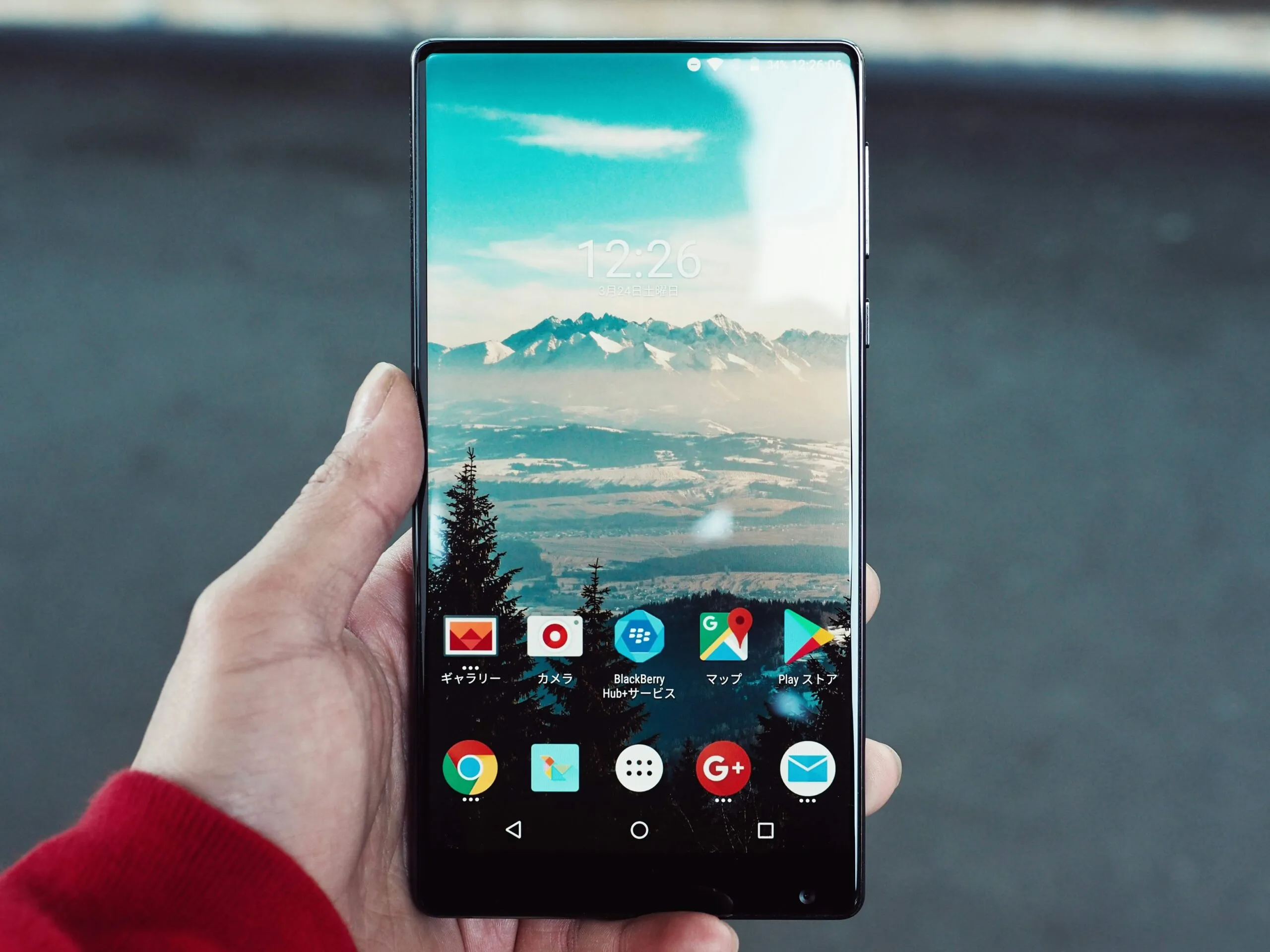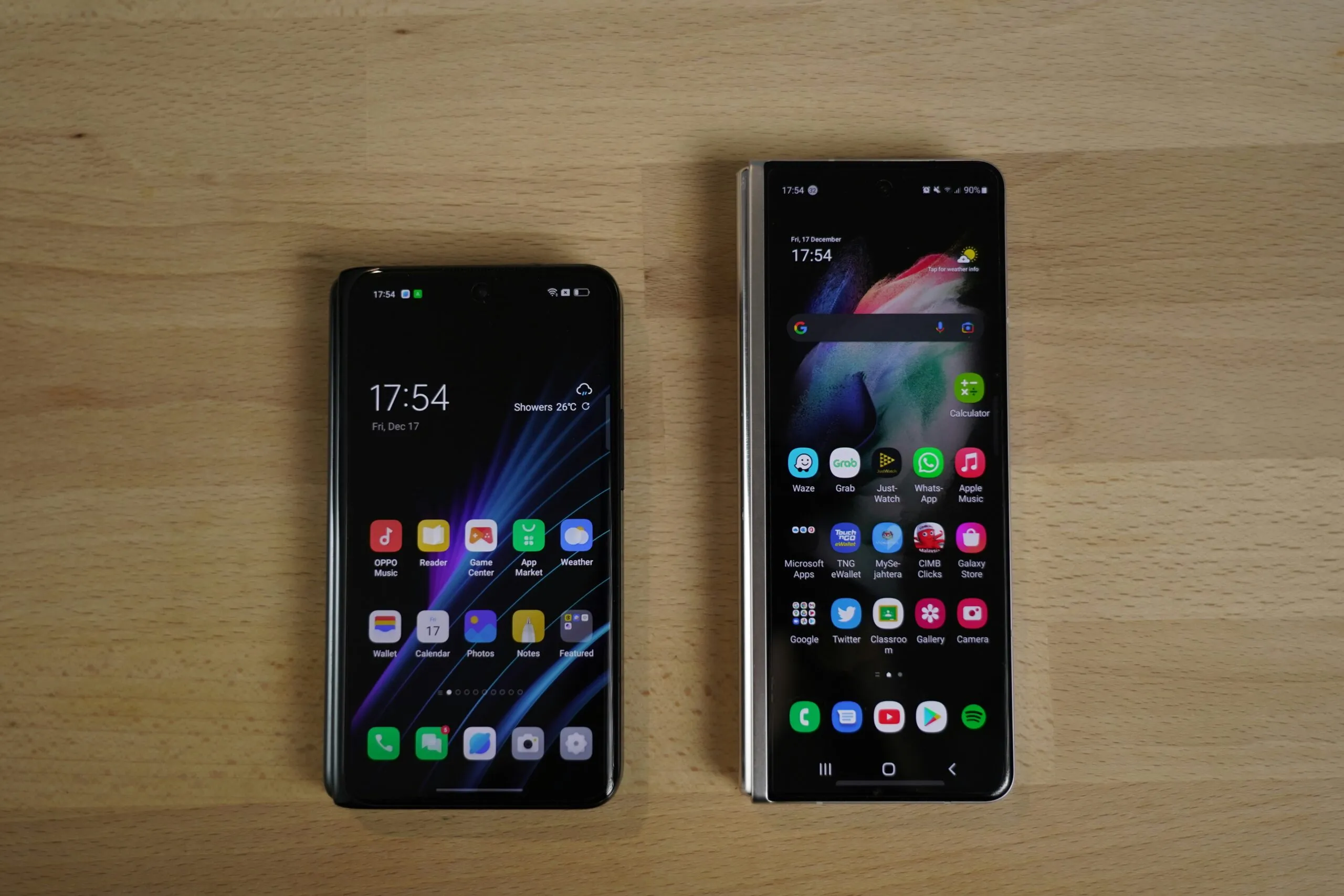
Introduction to Mobile Phone User Interfaces
Mobile phone user interfaces (UIs) serve as the crucial bridge between the device and the user, enabling communication and interaction. These interfaces have dramatically evolved from the rudimentary screens of early mobile devices to the sophisticated touch-driven displays found in modern smartphones. Early mobile UIs were characterized by basic text-based systems and physical buttons, which limited functionality and user experience. However, as technology advanced, so did the complexity and usability of these interfaces.
The significance of mobile UIs within the mobile industry cannot be overstated. They are a fundamental element that determines how users engage with their devices. The user interface encompasses everything from the layout of icons and navigation menus to the responsiveness of touchscreens. A well-designed UI enhances user experience, making it intuitive and accessible for a diverse range of users, regardless of their technological proficiency.
As we progressed into the era of smartphones, the advent of graphical UIs marked a transformative moment in mobile technology. The introduction of touchscreens facilitated multi-touch gestures, allowing for more dynamic interactions. This shift not only improved the accessibility of mobile devices but also spurred innovations in application development, leading to a diverse ecosystem of applications tailored for various user needs.
Today’s mobile phone user interfaces are designed with an emphasis on seamless user experience and accessibility, integrating advanced features such as voice recognition, haptic feedback, and customizable settings. These elements ensure that users can tailor their interactions to fit their preferences. The evolution of mobile UIs will be further examined in the following sections, highlighting how these advancements have shaped the modern mobile landscape and catered to the ever-changing demands of consumers.
The Early Days: Physical Keypads and Monochrome Displays
The evolution of mobile phone user interfaces can be traced back to the early days of mobile communication, which were primarily characterized by physical keypads and monochrome displays. During this period, mobile phones were predominantly utilitarian in nature, focusing on basic functionalities such as calling and texting. The interfaces of these devices reflected their purpose, as they were designed to be straightforward yet efficient.
One significant limitation of early mobile phone interfaces was their reliance on physical keypads. Users often encountered challenges when navigating through options or typing messages, as the compact design of the phones constrained the size and number of buttons. Additionally, the lack of visual feedback posed another obstacle, particularly when users were tasked with composing messages or selecting contacts. The monochrome displays made it difficult to interact with the device in a user-friendly manner, often forcing users to memorize key sequences or rely on trial and error.
Notable devices from this era, such as the early Nokia models, are exemplary of the physical keypad design. Nokia’s phones were beloved not only for their durability but also for their simplistic interfaces that allowed users to execute basic tasks with relative ease. Another iconic mobile device, the Motorola StarTAC, introduced a clam-shell design which was a significant advancement at the time, although it still featured a monochrome screen that limited its capabilities. These devices paved the way for future innovations by highlighting the necessity for improved navigation and visual displays in mobile technology.
Overall, while the early mobile phone user interfaces offered essential functionalities, they were limited by their physical designs and monochrome displays. This foundation set the stage for the innovations that would eventually lead to the rich, interactive experiences we enjoy in modern smartphones today.
The Rise of Touchscreens: A Game Changer
The introduction of touchscreen technology marked a significant turning point in the evolution of mobile phone user interfaces. Prior to this innovation, users primarily interacted with mobile devices through physical buttons and keypads, which limited functionality and usability. Touchscreen technology not only simplified navigation by allowing users to interact directly with visual elements on the screen, but it also paved the way for a more engaging and intuitive user experience.
One of the most groundbreaking devices to leverage touchscreen technology was the Apple iPhone, launched in 2007. This device revolutionized the smartphone market by demonstrating the potential of capacitive touchscreens, which respond to the natural conductivity of the human finger. The iPhone’s seamless integration of hardware and software set new standards for design and usability, igniting a rapid shift in how mobile phones were developed and utilized.
The user interface of the iPhone was designed to be visually appealing and highly functional, featuring multi-touch gestures that allowed users to pinch, swipe, and tap to perform various actions. This approach not only improved accessibility but also enhanced the overall aesthetic of mobile applications. Other manufacturers quickly recognized the advantages of touchscreen interfaces, leading to a wave of devices that adopted similar technologies and design philosophies.
As touchscreen technology evolved, it facilitated the emergence of sophisticated interfaces that incorporated gestures, animations, and other interactive elements. Mobile applications began to take full advantage of these capabilities, leading to a richer user experience that catered to a diverse range of functionalities. In essence, the rise of touchscreens transformed the way users interacted with their devices, firmly establishing touchscreen interfaces as the standard for modern mobile phones.
The Advent of Gesture-Based Interfaces
The transition from traditional button-based interactions to gesture-based user interfaces marks a significant evolution in mobile technology. Gesture-based interfaces enable users to engage with their devices through natural movements such as swipes, taps, and pinches, fostering a more intuitive relationship with technology. This innovation first gained traction with the advent of smartphones, notably with platforms such as Apple’s iOS and Google’s Android, which seamlessly integrated these gesture functionalities into their operating systems.
This new way of interacting not only enhanced the user experience but also made mobile devices more accessible to a broader audience. For instance, the pinch-to-zoom feature has redefined how users interact with images and websites on their smartphones. Such gestures eliminated the need for fine motor skills required to operate traditional buttons, making technology more user-friendly for individuals with disabilities. Furthermore, gestures can complement voice commands, thereby creating a multifaceted approach to navigating mobile devices that caters to various user preferences and abilities.
The growth of gesture-based interfaces has also impacted user engagement significantly. With such interfaces encouraging a more tactile and engaging experience, users tend to spend more time interacting with their devices. This heightened interaction has prompted app developers to innovate and create applications that utilize these gestures effectively, enhancing both functionality and user satisfaction. For example, applications can utilize swipe actions for navigation, empowering users to access content more fluidly.
In conclusion, the emergence of gesture-based interfaces represents a pivotal phase in the evolution of mobile phone user interfaces. This progression not only signifies a step towards more accessible technology but also illustrates the importance of user engagement in an increasingly digital world.
Customization and Personalization: Tailoring the User Experience
The evolution of mobile phone user interfaces has significantly elevated the level of customization and personalization available to users, enhancing their overall experience. In recent years, mobile operating systems have embraced the concept of user autonomy by allowing individuals to tailor their interfaces to better reflect personal preferences and lifestyles. This transformation began as simple modifications but has now evolved into sophisticated features that provide users with extensive control over their devices.
The introduction of themes has played a critical role in this shift. Users can now select various themes that not only change the visual aesthetics of the user interface but also create a personalized environment that resonates with their identity. Many smartphones offer pre-installed themes, while others support third-party options, enabling users to select colors, fonts, and icon styles that align with their personal tastes.
Widgets have also emerged as a significant feature in enhancing personalization. These mini-applications provide real-time information and quick access to essential functions right from the home screen. Users can arrange these widgets according to their needs, such as placing a weather widget for immediate access to updates or a music player for easy control over audio playback. This degree of customization allows for a more efficient user experience, as individuals can prioritize the information that matters most to them.
Shortcuts further amplify the personalization aspect by enabling users to streamline their navigation. Common actions, such as making a phone call or sending a message, can be transformed into dedicated shortcuts on the home screen, significantly reducing the time spent searching through menus. By offering such tailored features, mobile operating systems empower users to create an interface that not only meets their functional requirements but also aligns with their preferences.
This focus on customization and personalization represents a significant step forward in mobile technology, fostering user satisfaction and engagement. As technology progresses, the emphasis on tailoring user interfaces will likely continue to evolve, introducing new ways for individuals to express their unique styles and preferences through their devices.
The Role of Artificial Intelligence in User Interfaces
In recent years, artificial intelligence (AI) has emerged as a transformative force in the development of mobile user interfaces. The integration of AI technologies into mobile devices enhances the usability and intuitiveness of these interfaces, providing users with a more responsive and personalized experience. One of the most notable advancements can be observed in the realm of predictive text. Through machine learning algorithms, mobile platforms can now anticipate the words or phrases a user intends to type, significantly speeding up communication and reducing typing errors. This feature not only improves efficiency but also adapts to individual user behavior over time, making the suggestion process more relevant.
Furthermore, voice commands have redefined how users interact with their devices. AI-powered virtual assistants, such as Siri, Google Assistant, and Alexa, allow users to execute tasks using natural language processing. This capability has made mobile devices more accessible, catering to users who may struggle with traditional touch interfaces or prefer hands-free operation. As these voice recognition systems continue to evolve, they are becoming increasingly adept at understanding context, accents, and even emotional cues, thus enhancing the interaction quality.
Additionally, the role of AI extends to intelligent assistants that organize tasks and provide proactive suggestions based on user habits and preferences. These interfaces utilize data analytics and machine learning to offer reminders, schedule appointments, and answer queries, all while continuously learning from user interactions to become more efficient. As users rely more on these intelligent systems, the expectation for seamless integration into their daily activities increases. The continual refinement of AI technologies promises to further elevate mobile user interfaces, making them not only more intuitive but also increasingly essential to the user experience.
Accessibility Improvements in Mobile UIs
Over the years, mobile user interfaces (UIs) have undergone significant transformations, particularly concerning accessibility for users with disabilities. The mobile industry has increasingly recognized the importance of designing user experiences that cater to diverse abilities. Enhanced accessibility features have become integral components of mobile UIs, ensuring that users with various needs can engage with their devices effectively.
One of the most prominent advancements in accessibility is the introduction of voice-over functionalities. These features provide auditory cues that describe on-screen elements and actions, allowing visually impaired users to navigate interfaces seamlessly. By utilizing gestures or voice commands, individuals can manage their mobile devices independently, completing tasks such as sending messages or accessing applications without relying on sight. This technology exemplifies how inclusive design can empower all users, creating an equitable digital landscape.
Moreover, mobile UIs have incorporated visual adjustments to enhance usability for individuals with vision impairments. Features such as high-contrast modes, adjustable font sizes, and screen magnifiers enable users to customize their visual experience according to their unique requirements. This flexibility not only fosters a sense of ownership among users but also reflects the growing awareness of the need for accessible digital communication tools.
Customizable settings further underline the commitment to accessibility in mobile UIs. Users can alter various aspects of their device’s interface, such as color schemes and button layouts, to suit their preferences. This adaptability is vital for those with cognitive or motor disabilities, as it provides control over their interaction with technology. As a result, users can maximize their mobile experience while navigating the interface with confidence.
In summary, the strides made in mobile UIs toward accessibility highlight a crucial shift in the industry toward inclusivity and user-centered design. By adopting voice-over functionalities, visual adjustments, and customizable settings, developers are paving the way for a more accessible future in mobile technology.
Future Trends in Mobile User Interfaces
The evolution of mobile phone user interfaces is significantly impacted by rapid advancements in technology, leading to a dynamic landscape where user interaction is continually redefined. Emerging trends such as augmented reality (AR) and virtual reality (VR) are poised to transform how users engage with their devices. By integrating AR capabilities, mobile interfaces can provide users with overlaying digital content onto their physical surroundings, enhancing both productivity and entertainment. For instance, AR applications can facilitate navigation, gaming, and information display, making mobile user experiences more immersive and interactive.
Furthermore, the advent of VR technologies presents intriguing possibilities for mobile user interfaces. As VR headsets become more sophisticated and widespread, users may find themselves engaging with their mobile phones in completely new ways, such as through virtual environments where applications appear as part of a 3D space. This could redefine the concept of multitasking, as various tasks can be accomplished simultaneously within a VR framework, offering efficient and engaging usage scenarios.
Another noteworthy trend is the rise of foldable smartphones. This innovative technology presents a unique opportunity to rethink mobile user interfaces entirely. With devices that can unfold to reveal larger screens, the potential for enhanced multitasking and more immersive media experiences becomes apparent. Designers must now optimize user interfaces to adapt seamlessly to different screen sizes and orientations, pushing the boundaries of mobile design principles. As manufacturers invest in foldable technology, the user experience will likely focus on flexibility, allowing users to transition effortlessly between compact and expansive display modes.
In conclusion, the future of mobile user interfaces is set to be shaped by innovations such as augmented reality, virtual reality, and foldable designs. These trends promise to create more engaging, efficient, and versatile user interactions, fundamentally changing how we interact with our mobile devices in the years to come.
Conclusion: The Ongoing Journey of Mobile User Interfaces
As we reflect on the evolution of mobile phone user interfaces, it becomes evident that this journey has been marked by significant advancements driven by technological innovations and shifting user expectations. From the early stages of tactile buttons and simplistic displays to the current era characterized by touch-sensitivity and highly interactive designs, mobile user interfaces have transformed remarkably. This evolution has not only enhanced user experiences but has also made mobile technology more accessible to a wider range of users.
Throughout the years, the design principles behind mobile user interfaces have continually adapted to meet the demands of an increasingly digital society. The introduction of touchscreens revolutionized how users interact with their devices, promoting a more intuitive and fluid experience. Additionally, the integration of voice recognition and artificial intelligence has further expanded the boundaries of how users engage with their mobile devices, making interactions more natural and efficient.
However, the evolution of mobile interfaces is an ongoing process. As new technologies emerge and user behaviors shift, designers and developers face the challenge of keeping pace with these changes. The emergence of advanced features such as augmented reality, gesture-based navigation, and personalized content delivery highlights how the landscape is ever-evolving. The future of mobile user interfaces promises to be even more dynamic, with anticipated trends like foldable screens and increased ambient computing pushing the boundaries of interaction.
In conclusion, the journey of mobile user interfaces is far from complete. As we move forward, it is essential for industry professionals to remain adaptable, focusing on innovation while prioritizing user needs. The success of mobile technology hinges on its ability to evolve continuously, ensuring that interfaces are not only functional but also resonate with the users they serve. The interplay between technological advancement and user experience will undoubtedly define the future of mobile interaction.






